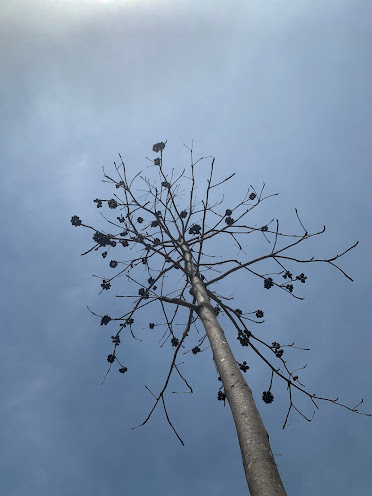In the quiet heart of the mountains, a golden blossom gently unfolds.
No eyes to admire, no words to praise, no need to be known.
It blooms like the breath of the earth — effortless, natural, as if existence itself were already complete.
“Cũng giống như bông hoa nở trong rừng sâu, chẳng ai biết đến hương thơm, chẳng được ai chiêm ngưỡng, nhìn ngắm và khen nó ‘Đẹp đấy!’, nhưng bông hoa không chết, không đau khổ, cũng không sợ hãi, hoang mang, mà ngược lại nó cứ đơn giản tỏa hương theo gió.”
— Thích Tánh Tuệ
“Like a flower blooming deep in the forest — no one knows its fragrance, no one admires or praises it ‘Beautiful!’ — yet it does not die, does not suffer, nor does it fear or doubt. It simply lets its scent drift with the wind.”
— Thich Tanh Tue (translated to English by ChatGPT)
Yet when the mind begins to divide — looking with worldly eyes and the intent to possess, the blossom suddenly wears what we call “beauty.”
That beauty does not belong to the flower; it arises from human desire, from the wish to own and to keep.
Thus, form becomes the bait of craving; we love, we want, we cling.
And in that very moment, the flower ceases to be itself — only a reflection born of thought, no longer in its natural being.
But when the mind grows still, when there is no division between self and other, beautiful and ugly — we simply stop and feel, without searching, without naming what is before us.
Then the blossom returns to its true nature — born of the earth, sustained by the sky, within the silent harmony of creation.
No longer beautiful or ugly, no longer “me” or “flower” — only the pure presence of non-self, the interbeing of all things.
In that stillness, we see ourselves within the flower — a beauty untainted by grasping; the mind weightless, and all forms quietly dissolve.
And then, the flower is still yellow, and the wind remains still.
Nothing has changed — only that we no longer gaze with the eyes of desire.
In that quiet moment, all notions of beauty and loss dissolve into stillness.
The blossom is simply there — as it always was, as it always will be.
With a single breath, we return — to the place where the blossoms are golden, the wind is silent, and the heart unmoving.












